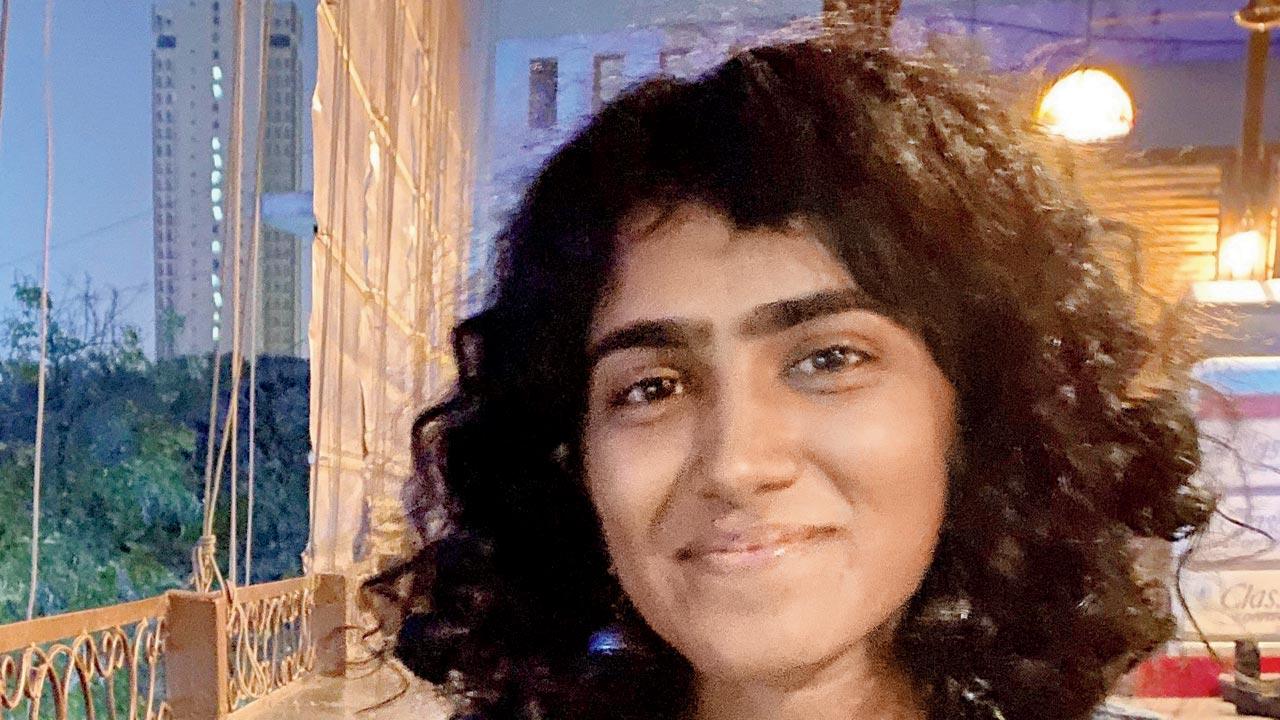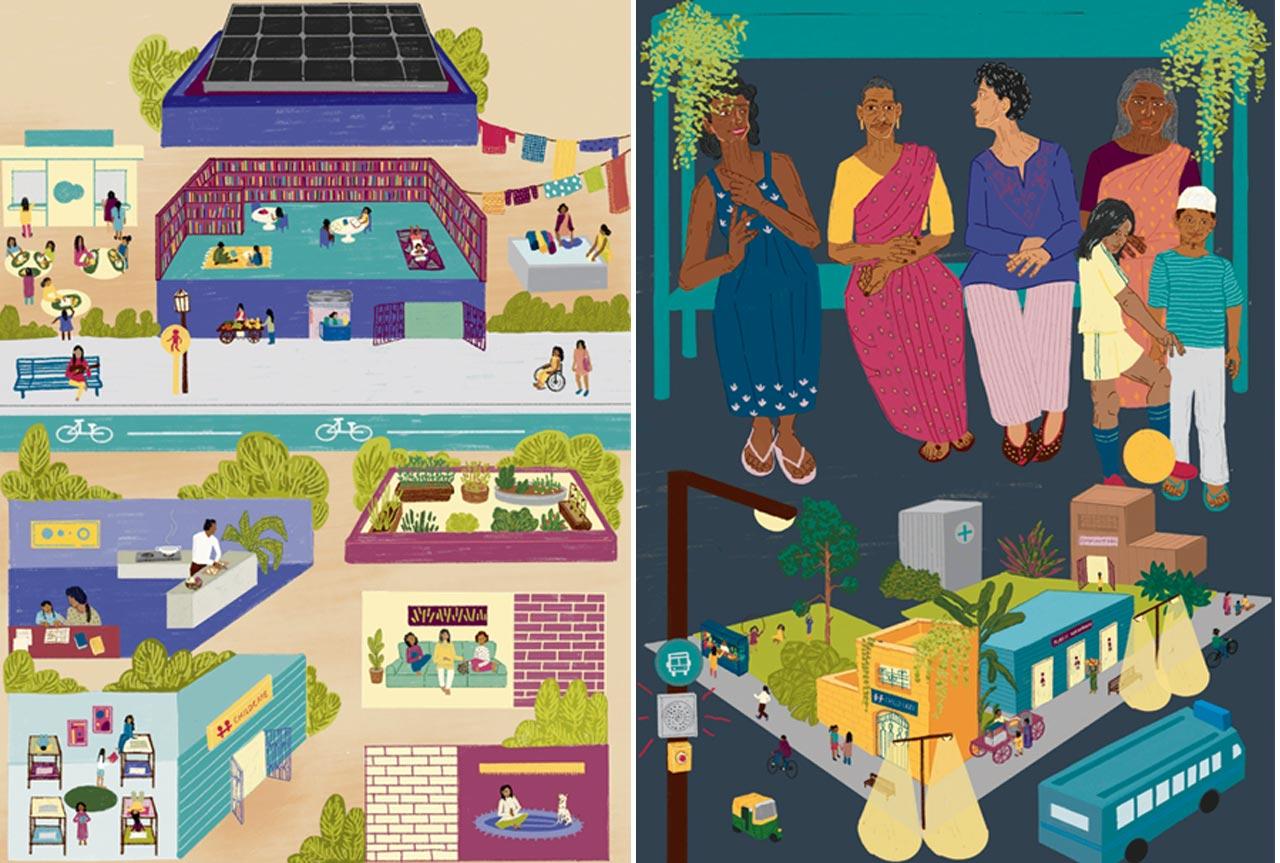A Bengaluru woman may have had a hand in Glasgow being stamped UK’s first feminist city, but her own country is miles away from the honour

Scottish Green Party’s Holly Bruce celebrates at the Glasgow City Council in May as local government election results are revealed. Pic/Getty Images
When Glasgow was recognised as the UK’s first feminist city last week, in part to the efforts of Scottish Green Party Councillor Holly Bruce, thousands of miles away in Bengaluru, a woman in her late 20s was also rejoicing. It was not without reason that Sneha Visakha was joyous; she had played a “small role” in the big chapter of feminist urban planning.
ADVERTISEMENT
Bruce, who proposed feminist town planning to Glasgow City Council that was accepted unanimously, was also part of the Young Women Lead (YWL) programme of 2021. Scotland’s YWL, a cohort of women aged between 16 and 30 years, conducted a nine-month-long study of Glasgow’s urban infrastructure. This culminated into a report titled Glasgow: A Feminist City? and Visakha was invited to speak as a resource person. That’s how Visakha found herself as a cog
in the wheel of a city rolling towards equality.
YWL is a leadership programme by YWCA Scotland, the Young Women’s Movement (formerly, the Young Women’s Christian Association). The programme was launched in 2017 in partnership with the Scottish parliament and was created to address the underrepresentation of young women in politics. In 2021, YWL was revised to further engage young women with local democracy.
 Sneha Visakha
Sneha Visakha
“In June 2021,” Visakha tells mid-day, “YWCA Scotland got in touch with me for research on feminist town planning in Glasgow. As I understand, this was in the aftermath of the murder of Sarah Everard in London, who was kidnapped on her walk back home from a friend’s house.” Visakha, a lawyer by training, works as a senior resident fellow at the think tank, Vidhi Centre for Legal Policy. She is also the creator and host of the Feminist City Podcast series that looks at the everyday experiences of urban women and girls.
“They requested me to conduct an online session as a resource person for their YWL cohort of approximately 25 women on feminist town planning,” says Visakha, adding, “I shared my research over Zoom. YWL submitted their report on feminist town planning in Glasgow later that year, and cited my research multiple times. My name was also mentioned in the acknowledgments.”
Visakha tracked developments in Glasgow all of last year. “When I heard the news that the City Council unanimously passed the motion, I was delighted. Especially since Councillor Bruce was one of the young women in YWL and a co-author of the report.”
 Sneha Visakha’s research on feminist town planning deliberated on the need for structural change in physical infrastructure and upping the game in social infrastructure to build safer and more equitable cities for girls and women. Illustration/ Drishti Khokhar
Sneha Visakha’s research on feminist town planning deliberated on the need for structural change in physical infrastructure and upping the game in social infrastructure to build safer and more equitable cities for girls and women. Illustration/ Drishti Khokhar
The nine-month-long study inspected whether the city infrastructure “reflects and supports the diverse needs of women and non-binary residents”. The cohort collected gender-disaggregated data through two surveys focused on attitudes towards Glasgow’s bus system and public parks. Through this they distilled the
experiences of women and non-binary people within urban design and development.
Bruce’s representation stated that women should be “central to all aspects of planning, public realm design, policy development and budgets”. She told a Scottish media house that, “Safety is one aspect of feminist town planning, but it’s also about accessibility to public spaces and public services, and affordability. Walking from [point] A to B can be a bit of a nightmare for many women, for example, disabled women or those who have children.”
After the motion was passed, she said, “For too long, our streets, parks and buildings have been designed by men. The apparently ‘gender-neutral’ approach that we’ve used for centuries has meant that the male perspective has become the default.”
In February 2021, much before YWL’s report, Visakha released her own research in the Indian context, Making a Feminist City—Planning Safety and Autonomy for Women. She aimed to fill a key gap in urban planning and municipal governance literature in India by recommending feminist urban planning as an approach to build safer and thereby, more equitable, cities for girls and women. Visakha says apart from investment in physical infrastructure, including well-lit streets, footpaths, free public toilets that are functional 24/7 etc, social infrastructure such as community housing, shelter homes, child care facilities, hospitals, reproductive and mental health facilities, legal aid centres etc, are pertinent to any city. “The right to public space, and by extension the right to the city, is linked closely to the provision of public spaces and services,” she says.
To her, the built environment is a reflection of societal values, “be it patriarchy or any other inequality and discrimination, [it] is reflected in the city’s built environment.”
Visakha insists her “minor participation” in the research is incomparable to the work done by young women in Glasgow. “To be cited is a joy for any researcher, but to see its translation to real-world impact is another joy altogether. This is a first for me, in both. To be cited and to witness it as part of a larger international women’s effort,” she tweeted.
Now Visakha hopes women and cities, especially in India, demand more from their governments. Back in 2020, Mumbai became India’s first city to have a gender-specific approach to urban planning. It was in the form of BMC’s inclusion of a new chapter, Gender, Special Groups and Social Equity, in its Revised Draft Redevelopment Plan (RDRP) 2034, to include gender in public spaces.
Visakha says, “There is an urgent need for feminist urban planning in India to build cities designed for women’s autonomy and freedom, moving away from protectionist measures. We need to question ourselves whether young women in India are able to enter politics and change things in their community. If not, we should begin with their involvement at the local governance level to give them a voice at their community and neighbourhood.”
 Subscribe today by clicking the link and stay updated with the latest news!" Click here!
Subscribe today by clicking the link and stay updated with the latest news!" Click here!







